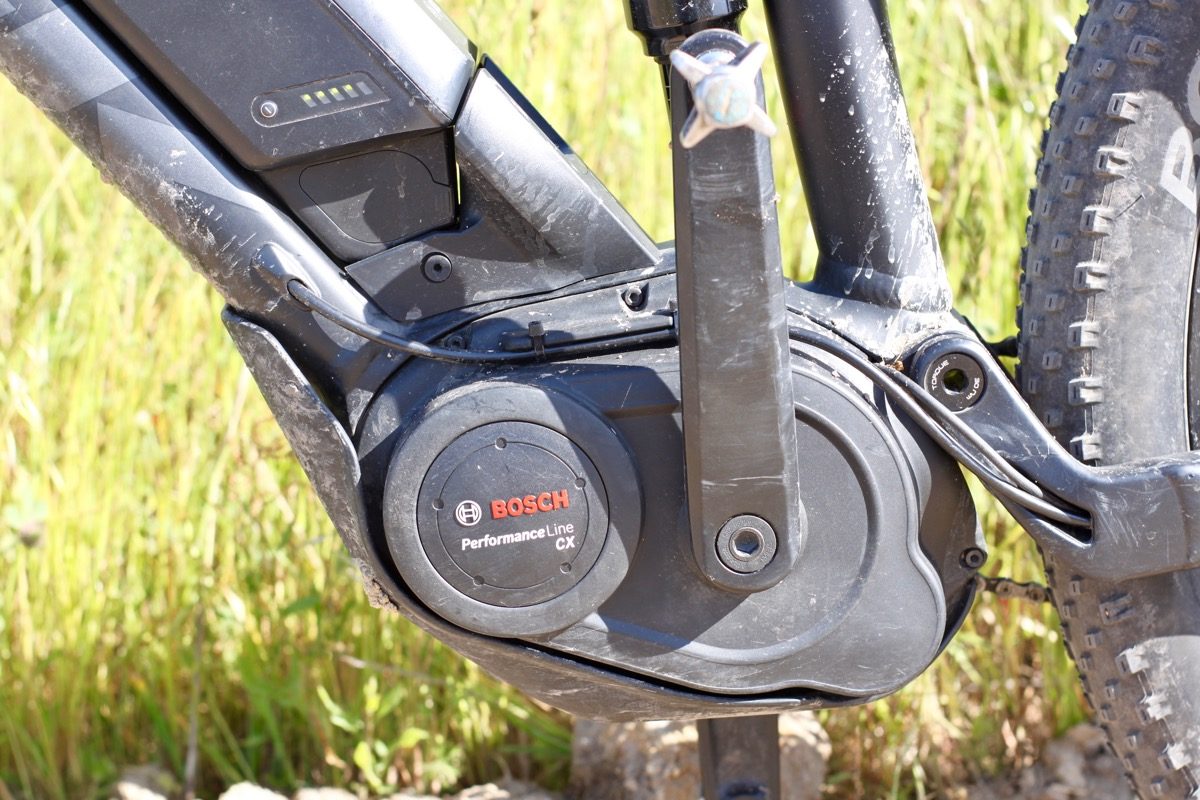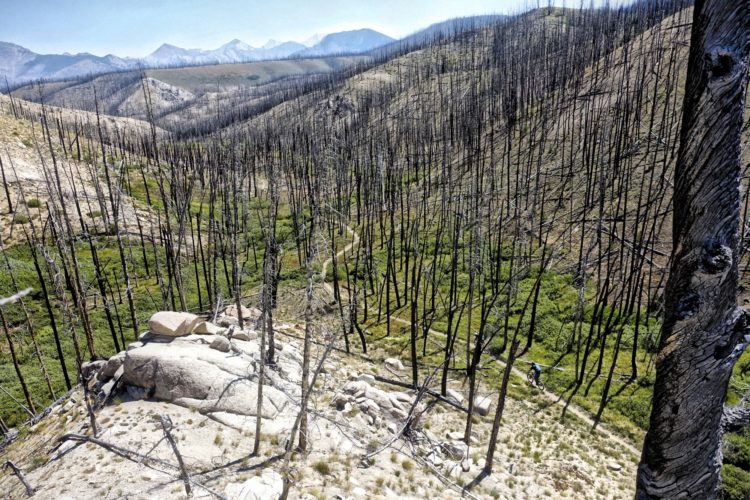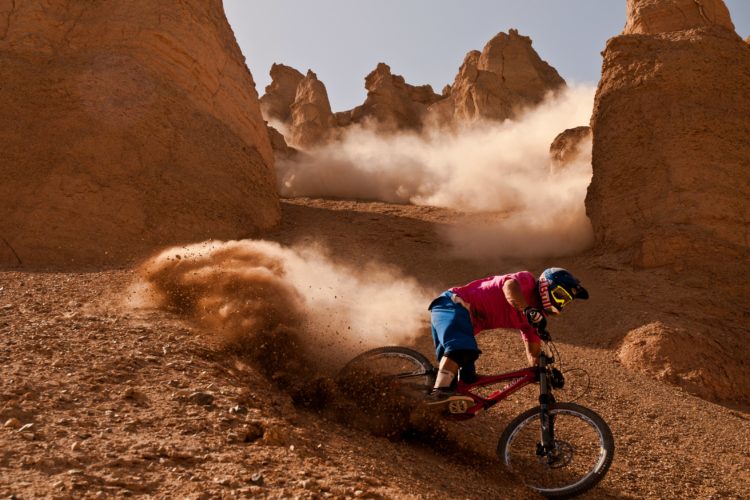The mountain bike industry is healthy–possibly the healthiest it has ever been! Or so say a dozen odd people across the industry that I’ve interviewed on the topic over the last couple of months. While the sport and the industry might be in a good place, that doesn’t mean we’re not facing challenges… and perhaps some of the biggest challenges our sport has ever faced.
While it’s human nature to want to separate these challenges into individual obstacles that need to be overcome, checking off one and then the other in sequence until we’ve created an invincible industry, the reality is much more complex. As I slowly sifted through a series of sometimes convoluted interview responses, several common threads emerged. But these various threads twisted together, one wrapping around the other, eventually tying into one giant knot of a challenge. Here, I hope to tease out the individual threads, the individual challenges that face the mountain bike industry in 2018, and how they’re related.
Ebikes

By far, the hottest topic of debate as we head into 2018 is the ebike issue. Some industry experts are 100% on board with ebikes, and yet they still acknowledge the challenges that ebikes bring. “A great [thing] about these ebikes is [that] so many people who can’t really do or enjoy a ride can just get out and have an amazing experience,” said Joe Lawwill, Shimano’s head of Mountain Bike Marketing for North America.
But Lawwill acknowledges the challenges that ebikes pose, saying “there are a few legitimate concerns,” like “trying to figure out places where they can be legally ridden.” Lawwill also notes, “there are a few people going up trails a little bit faster than other people are expecting,” a challenge that could cause user conflicts on the trails.
Chris Cocalis, President/CEO of Pivot Cycles, also thinks that ebikes are a big deal–regardless of your opinion on the topic. “They are coming whether we like it or not,” said Cocalis, “and they are going to be popular to a level that has the ability to negatively or positively influence future trail access and trail building.” Cocalis continued, “Regardless of which side of this issue you are on, it is a real issue and one that needs to be handled in a way that positively elevates the sport as a whole. Otherwise, there could be long-term effects that could damage trail access and the long-term health of the sport.”
Mountain Bike Trail Access
“We live and die by trail access, and I think it will always be our biggest threat,” said Cocalis. “No Trails = No Mountain Biking.” While my interviewees pointed to a wide range of challenges that mountain bike trail access faces in 2018, the two most common threats mentioned were ebikes and irresponsible riders.
Ebikes

Cocalis and others rightly drew the connection between the ebike issue and the topic of trail access. Perhaps the most complicated hurdle to overcome regarding ebikes on trails is a public relations and perception issue. “The line between the bike industry and the ebike industry has blurred among some of the bigger names,” said Ted Stroll, President of the Sustainable Trails Coalition. He continued:
“People are wondering why the bike-plus-ebike industry made ingenious but arguably crafty efforts to get ebikes legalized on what were nonmotorized multi-use singletrack trails in three states—California, Tennessee, and Utah—and then fended off claims that it was doing just that. These manufacturers don’t seem to encourage discussion about the political risks of ebike access on human-powered mountain biking. Depending on how many speeding (uphill and on rolling terrain) ebikers in jeans and floppy hats with loud sound systems eventually annoy land managers, our mountain biking access could suffer. Almost every ebiker I’ve seen in the Bay Area fits that description, except that I’ve only encountered one ebiker with the loud sound system (he was tailgating me up to the Mount Umunhum summit while talking incessantly).”
Greg Fisher, Account Director for True Communications, agrees that perception will be a challenge. “There’s a very real land management issue that has to happen,” said Fisher. “Just because you have a good product doesn’t mean [that] a land manager, who’s never ridden mountain bikes, [will understand ebikes].”
Irresponsible Riders

Ebikes aren’t the only trail access issue that we face. Some advocates are more focused on ensuring that current mountain bikers present themselves in a responsible way. “Growth in so many outdoor activities including biking, hiking, trail running, and backcountry access means we all need to think about user responsibility and sharing the trails well more than ever,” said Dave Wiens, Executive Director of the International Mountain Bike Association. “Responsible riding and the industry supporting responsible riding is going to be important to maintain and improve access for mountain bikers.”
Brent Van Eps, Sales Floor Manager and Customer Service Ninja for Absolute Bikes, agrees. “Making sure that that edgy, young rider isn’t just absolutely thrashing the trail and mowing people down [is a challenge],” said Van Eps. “I’ve mountain biked since ’84 and I’ve heard that since day one.“
Connecting with the Customer

A third major category of challenges facing the mountain bike industry is how brands can best connect with the customer–the actual rider–as independent bike dealers close at an accelerating rate across the nation. With many sales happening online, getting the customer on the right bike can be challenging. “I think the local bike shop can be the catalyst for somebody’s [positive] experience,” said Van Eps. “But I think people maybe buy other places, don’t get the right bike, and their experience can be dismal.”
In 2018, online sales of every product under the sun is nothing new, but as Van Eps tactfully alluded to, the disconnect between online sales and the local bike shop still hasn’t been resolved. “It comes down to how we’re reaching the consumer,” said Ryan Krueger, Marketing Manager for Terrene Tires. “It’s very much evolving right now, where you can get pretty much all the information you need from the internet, but there’s still a place for the retail industry. I think the challenges are figuring out how to bridge that gap.”
Related to this challenge is getting new riders on a bike that’s actually worth riding… without having to spend an arm and a leg. “There’s gotta be a way to get kick-ass product at a great price, [get] the gear at a great price, and [make sure it’s] not sub-par product,” said Van Eps. “There’s plenty of mountain bikes for a thousand bucks, but if you start dipping below $800 they’re pretty shady. It’d be awesome to see $300 and $400 mountain bikes that are actually good. You can actually ride them.”
Absolute Bikes’ focus on the rider is clear. Shawn Gillis, Owner and Founder of Absolute Bikes, notes that making sure “people [can] just go out and have an amazing-good time” is the biggest challenge facing the industry in his opinion. Gillis tied that theme to everything in the industry. After discussing related trail access issues, he continued, saying “the shops are part of it, the clubs are part of it, our trade shows need to address that too. It’s a solution that is there, but it’s going to take a lot of people. And the solution should be really fun.”
“There are a number of independent specialty bike shops that do a really good job of creating a community space,” said Vince Mazzuca, Senior Marketing Manager for Osprey Packs. “Whether that means [inserting] a cafe like our local bike shop, Kokopelli, or [inserting] a taproom. . .[so that it’s] not just like, ‘this is a place to come find gear,’ but ‘this is a place to meet before your ride and plan out your day and have a coffee, and wrap up your day here with a beer and a burrito,’” Mazzuca explained. “The more that retailers can find a way to be the community hub, I think the better off they’ll be. We’re nothing without strong, independent retailers.”
Conclusion
We can’t lose access to mountain bike trails, and ebikes are a very real threat to that access. Current mountain bikers need to be responsible and respectful trail users as well. Riders need easy access to gear at a great price. And at the same time, we need to ensure that new riders have a downright-amazing experience when they hop on a mountain bike for the first time.
Unfortunately, the three major challenges facing the mountain bike industry in 2018 (and beyond) aren’t easily broken into independent, bite-sized chunks. As Gillis and others pointed out, overcoming these challenges will require a cohesive strategy that requires all of the various factions within the mountain bike industry to work together to solve these issues cooperatively. Maybe, just maybe, these challenges will provide us with an opportunity to become a better sport and a better industry than ever before.






















8 Comments
Dec 12, 2017
If you are going to judge this E bike thing, go ride one first. That is what I did. And whatever you like is great, just don't tell me what I should like.
Dec 13, 2017
Dec 14, 2017
Dec 12, 2017
It might not be PC, but naturally gating/limiting access is what makes trails sustainable. Or do we want every trail now to be full of braking bumps due to e-bikes as lift substitutes.
Dec 15, 2017
Trail access is a very big issue - eBikes will definitely impact trail restrictions in a major negative way. Of course manufacturers like the idea - it means new sales & $$.
Dec 12, 2017
Dec 15, 2017
Dec 14, 2017